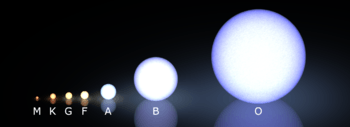HD 98649
| Observation data Epoch J2000.0 Equinox J2000.0 | |
|---|---|
| Constellation | Crater |
| Right ascension | 11h 20m 51.769s[1] |
| Declination | –23° 13′ 02.43″[1] |
| Apparent magnitude (V) | +8.00[2] |
| Characteristics | |
| Spectral type | G4V |
| B−V color index | +0.658 ± 0.003[1] |
| Astrometry | |
| Proper motion (μ) | RA: –199.28 ± 0.57[1] mas/yr Dec.: –177.51 ± 0.48[1] mas/yr |
| Parallax (π) | 24.08 ± 0.79[1] mas |
| Distance | 135 ± 4 ly (42 ± 1 pc) |
| Absolute magnitude (MV) | +4.91[2] |
| Details | |
| Mass | 1 ± 0.03[2] M☉ |
| Radius | ~1[2] R☉ |
| Luminosity (bolometric) | 0.86[2] L☉ |
| Luminosity (visual, LV) | 0.83[note 1] L☉ |
| Surface gravity (log g) | 4.38 ± 0.08[2] cgs |
| Temperature | 5759 ± 35[2] K |
| Metallicity [Fe/H] | –0.02 ± 0.03[2] dex |
| Rotation | 27 ± 4.0 days[2] |
| Rotational velocity (v sin i) | 1.19[2] km/s |
| Age | 2.3 ± 2.0[2] Gyr |
| Other designations | |
| Database references | |
| SIMBAD | data |
| Exoplanet Archive | data |
| Extrasolar Planets Encyclopaedia | data |
HD 98649 is a G-type yellow dwarf star, classified as a G4V. HD 98649 is about 135 light years from earth. HD 98649 is found in the Crater constellation. [2]
Planetary system
From 1998 to 2012, the star was under observance from "the CORALIE echelle spectrograph at La Silla Observatory".
In 2012, a long-period, wide-orbiting planet was deduced by radial velocity. This was published in November.
The discoverers noted, "HD 98649b is in the top five of the most eccentric planetary orbit and the most eccentric planet known with a period larger than 600 days." The reason for this eccentricity is unknown. They also submit it as a "candidate for direct imaging", once it gets out to "10.4 AU at apoastron" and 250 milliarcseconds of separation relative to Earth.[2]
| Companion (in order from star) |
Mass | Semimajor axis (AU) |
Orbital period (days) |
Eccentricity | Inclination | Radius |
|---|---|---|---|---|---|---|
| b | >6.8 ± 0.5 MJ | 5.6 ± 0.4 | 4951+607 −465 |
0.85 ± 0.05 | — | — |
Sun comparison
This chart compares the Sun to HD 98649. HD 98649 was in the past thought to 4.7 billion years old, new measurements have found HD 98649 to be younger at 2.3 billion years old. [2]
| Identifier | J2000 Coordinates | Distance (ly) |
Stellar Class |
Temperature (K) |
Metallicity (dex) |
Age (Gyr) |
Notes | |
|---|---|---|---|---|---|---|---|---|
| Right ascension | Declination | |||||||
| Sun | — | — | 0.00 | G2V | 5,778 | +0.00 | 4.6 | [4] |
| HD 98649 [5] | 11h 20m 51.769s | –23° 13′ 02″ | 135 | G4V | 5,770 | −0.02 | 2.3 | [6] |
To date no solar twin with an exact match as that of the Sun has been found, however, there are some stars that come very close to being identical to that of the Sun, and are such considered solar twins by the majority of the public. An exact solar twin would be a G2V star with a 5,778K temperature, be 4.6 billion years old, with the correct metallicity and a 0.1% solar luminosity variation.[7] Stars with an age of 4.6 billion years are at the most stable state. Proper metallicity and size are also very important to low luminosity variation. [8][9][10]

References
- 1 2 3 4 5 6 van Leeuwen, F. (2007). "Validation of the new Hipparcos reduction". Astronomy and Astrophysics. 474 (2): 653–664. arXiv:0708.1752
 . Bibcode:2007A&A...474..653V. doi:10.1051/0004-6361:20078357.Vizier catalog entry
. Bibcode:2007A&A...474..653V. doi:10.1051/0004-6361:20078357.Vizier catalog entry - 1 2 3 4 5 6 7 8 9 10 11 12 13 14 Marmier, M.; et al. (2013). "The CORALIE survey for southern extrasolar planets XVII. New and updated long period and massive planets". Astronomy and Astrophysics. 551. A90. arXiv:1211.6444
 . Bibcode:2013A&A...551A..90M. doi:10.1051/0004-6361/201219639.
. Bibcode:2013A&A...551A..90M. doi:10.1051/0004-6361/201219639. - ↑ "hd_98649_b".
- ↑ Williams, D.R. (2004). "Sun Fact Sheet". NASA. Retrieved 2009-06-23.
- ↑ HD 98649 at SIMBAD - Ids - Bibliography - Image.
- ↑ Porto de Mello, G. F.; da Silva, R.; da Silva, L.; de Nader, R. V. (March 2014). "A photometric and spectroscopic survey of solar twin stars within 50 parsecs of the Sun; I. Atmospheric parameters and color similarity to the Sun". Astronomy and Astrophysics. 563: A52. arXiv:1312.7571
 . Bibcode:2014A&A...563A..52P. doi:10.1051/0004-6361/201322277.
. Bibcode:2014A&A...563A..52P. doi:10.1051/0004-6361/201322277. - ↑ NASA, Science News, Solar Variability and Terrestrial Climate, Jan. 8, 2013
- ↑ University of Nebraska-Lincoln astronomy education group, Stellar Luminosity Calculator
- ↑ National Center for Atmospheric Research, The Effects of Solar Variability on Earth's Climate, 2012 Report
- ↑ Most of Earth’s twins aren’t identical, or even close!, by Ethan on June 5, 2013
Notes
- ↑ Taking the absolute visual magnitude of HD 98649 and the absolute visual magnitude of the Sun , the visual luminosity can be calculated by